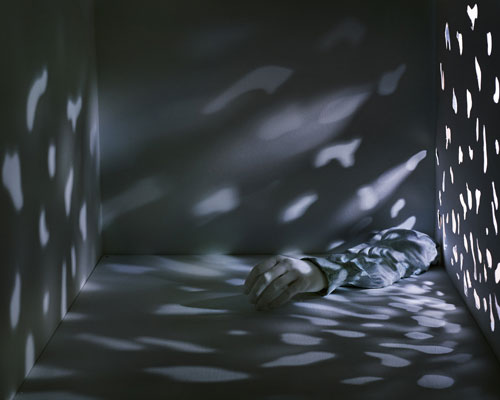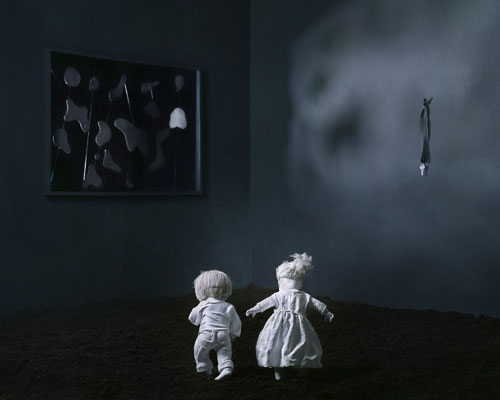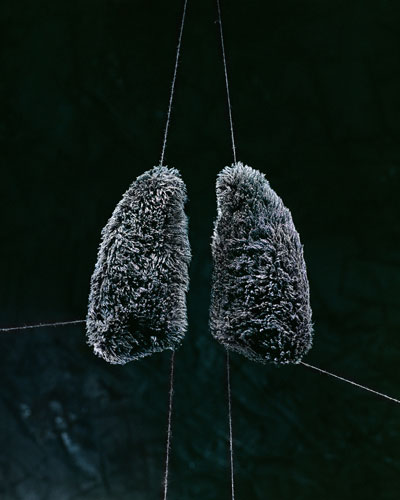 |
 |
 |
| Limbo – a Real or Sensual World? |
| Stephen Hawking has said that we perceive reality by means of an internal model of reality, constructed in the human mind. So does objective reality exist? If it does, then in its objective state it exists beyond us. On the cosmic scale we do not have any influence on reality, and if we think we do, we display our conceit and faith in the superiority of the human ego. Nowadays there are certain fashionable tendencies in photography which stubbornly try to document the world in the form of a collection of “pics” which seems to be but a desire to become a part of the larger, blog-like photographic style that reproduces and multiplies bland, standard and dull photos. If it discovers something it is merely the joy of proliferating literal images. As a physically handicapped person Stephen Hawking uses his mind to a larger extent, he employs it to study and discover the world beyond our standard cognition, beyond the “global village” controlled by the messages of the media. His mind reaches the farthest limits of the universe. This is a paradox because thanks to our mind – augmented by knowledge and imagination – we are able to get to know the surrounding world better, to discover more and to create a richer, more interesting model of reality than by means of an even most technically detailed media message. So can photography – which is informally called the mirror of reality and according to some people is an imprint of the visible world – really represent the sensual world? Certainly, yes, but only such photography which is not treated as the mirror of reality but as a reflection-image that shows our mental world. The world of Igor Oleś presented in his photographs from the Limbo series is his internal world. Every sensible and conscious viewer can make contact with him by way of photography but only if he does not treat it as the mirror of reality and if he is not just a passive recipient. If he keeps asking questions, he will discover the ambiguous mystery of the symbols hidden in these works. According to the Christian faith the limbo is an abyss, a place where the souls of unchristened children go. Igor’s limbo is the state in which his memories are suspended in time, it is the world of metaphors and of a specific kind of hope. It is the world seen from the outside, from the position of an observer who is distanced towards reality. Is there anyone who can claim with absolute certainty that he understands the mechanism of the world? It could be only someone who rejects imagination and looks at the world from the position of comfortable convention, rejecting his own, personal and frequently original vision of the world. Igor Oleś is above photography if we take this medium literally. We could present the model of an average photographer as a walking photographic camera. He photographs what he seemingly sees, remaining blind to his own imagination. He sees only what has been imposed on him by the media and by the safe, fashionable models of images. On the other hand, such photographers as Igor Oleś are rebels in our contemporary world. They are too difficult for many viewers because they do not fit into contemporary fads. As Oleś himself writes: “All these photographs appeared in my head in the form of impressions, unfinished images which slowly ripened and gained a new, specific shape in the act of taking photographs. Their various styles are supposed to emphasize the sinusoid-like, wavy nature of each emotional state we can find ourselves in.” However, Oleś turned out to be not only a photographer but also an author of sculptures-objects. And his photographs go very well with those objects – they seemingly document them. Seemingly, because the objects in his photographs gain a different kind of credibility – the credibility of dreams and memories. Without the photographs these objects would be merely normal spatial objects, but when they are confronted with the photographs we can look at them differently; more consciously but less literally. This is where the power of photography lies, the power that can reach beyond the limits of the banal model of the mirror. Looking at the objects and photographs by Igor Oleś I am reminded of the chair with tallow by Joseph Beuys or of staged photographs and sets by Sandy Skoglund. Each of Oleś’s photographs carries different kinds of associations. Walking children-dolls are a memory but also a reference to the forgotten world of childhood which is often rejected in the stereotypical world of adults. We must remember that when we walk through the gate leading out of the yard of memories we enter the passionless everyday routine. What connects all of Oleś’s photographs is the closed space of the photographic set or location. Sometimes it is a corner of the room, sometimes a close background of the wall. Objects enclosed in this restricted space become even more unreal and symbolic. As far as I am concerned they are more like fetishes of the past, they evoke our cares and worries enchanted in images. We can not only see, but also touch “his” memories. They gain a new context when they remove some trivial and unimportant objects from grey everyday reality. Showing these objects again in the photographs or in the space of the gallery gives them new value – they change from profanum into sacrum. All these photographs are very closely connected with the author’s life but they are not devoid of universal features and meanings. Far from being literal, they are rather ambiguous. Symbols hidden in most common objects such as clothes, a chair, a pillow etc. surround us every day and accompany us in good and bad times. A pillow may be the symbol of the night, while a black rectangle cut out in the wall is an abyss of a bad dream that could turn out to be reality. On one of the photographs by Oleś we can see the author as an old man – is this a prediction or the demonstration of the state in which he is right now? White, empty sheets of paper in the background symbolize the question about the unknown, about our future destiny. Every photograph is filled with symbols which any inquisitive viewer with a rich imagination is able to decipher. Limbo thus becomes an individual space of exclusion but also of suspension within the chasm of fate of every one of us. Igor Oleś’s limbo becomes the symbol of “unchristened” people, excluded from the model of the contemporary world, living beyond the egalitarianism of the media and beyond the trivia imposed on us by the trends of fashion and shallow ideals. The fullness of our life is within us; it does not depend on wealth or on what we possess but on our individual way of looking at reality and on how we can enrich its model. On one of his photographs with dolls Igor Oleś can be seen hanging a little key – it is the symbol of choice which points to the possibilities of our opening onto a richer world. Explaining these photographs may be time-consuming: for example, what is the meaning of a hand in something that looks like a closed box with holes cut out in it, holes through which light shines? What is the meaning of “hairy lungs”, of empty white frames, of a stiff shirt or of linen sheets which resemble crumpled bed-sheets suspended in the air? I leave the answers to these questions to the viewers since the richness of Oleś’s photographs and objects depends on our own interpretation and on their different readings performed by each of us. The world of the photographs and objects presented by Igor Oleś is ambiguous, multimedia-like, we could even say, but not only with regard to the means of expression used by the artist but most of all due to the various paths leading us towards their meanings and symbols. Igor Oleś’s photography confirms its great potential to show us something that usually seems impossible and is often rejected for this reason – because it is intellectually difficult. Oleś’s photographs call separate entities and new constructions into being; they produce other worlds and bring them to life. As I have said earlier, the photographs at this exhibition are accompanied by objects. That is why we have to do here with an apparent tautology, a repetition of one and the same thing in the space of the gallery and within the image. André Rouille once wrote: “In spite of the fact that an imprint is the reflection of the (preexisting) thing in the form of its image, we ought to consider how the image itself creates reality ”. We could say that Oleś’s photographs are registrations, though not of the objects presented at the exhibition but of their models, of those primeval objects which had existed earlier in his mental model of reality. Such a parallel reality, presented at his current exhibition, is rather rarely used by photographers. Sandy Skoglund whom I have recalled above sometimes replicates in the gallery the whole space of her original staged set and places her objects almost exactly in the same places as in the photographs. Igor Oleś shows us only objects in the gallery. That is why they play a different role here, becoming mute eyewitnesses of the story documented in the photographs and not being only a simple piece of instruction in the author’s photographic method. They are independent of the story recorded in the photographs; they create an illusive, a so-called other reality which is the side-effect of an event documented in the pictures. The viewer at the exhibition by Igor Oleś should be focused and concentrated inside. And there should be silence; silence among the noises of this constantly babbling world which tries to devour us so aggressively. |
Grzegorz Przyborek Łódź, May 26th, 2013 translated by Maciej Świerkocki |
 |
 |
 |
Copyright ©2013 Galeria FF ŁDK i Autorzy |